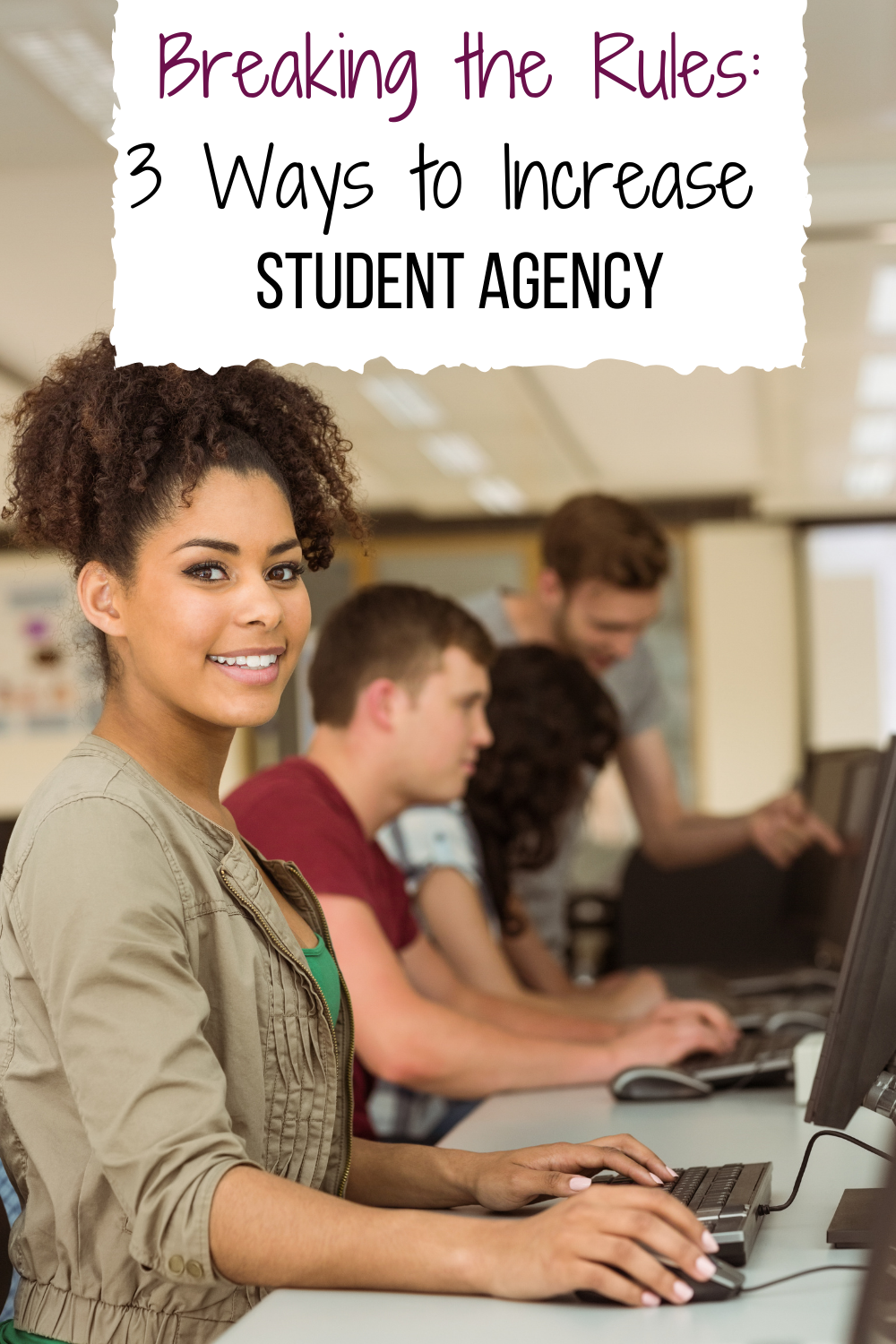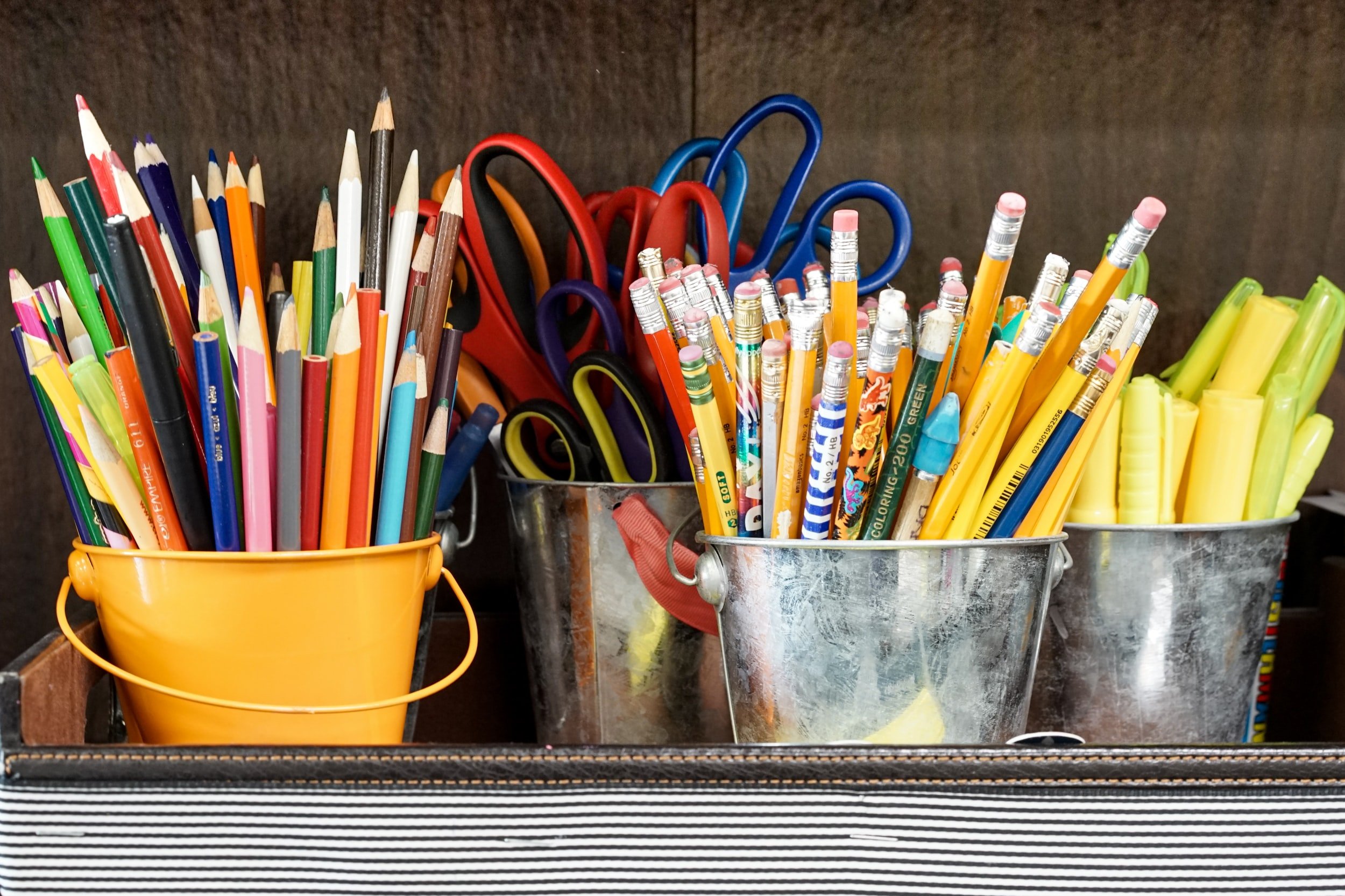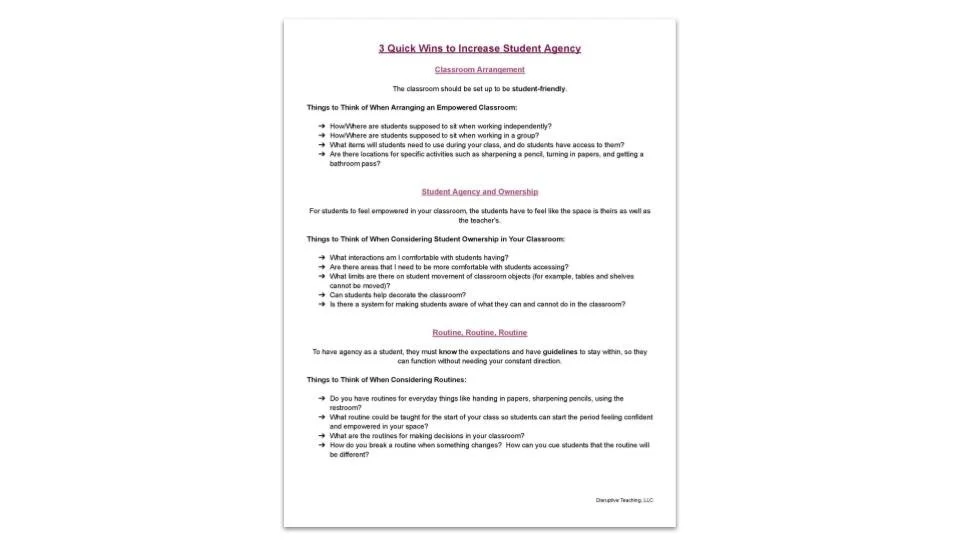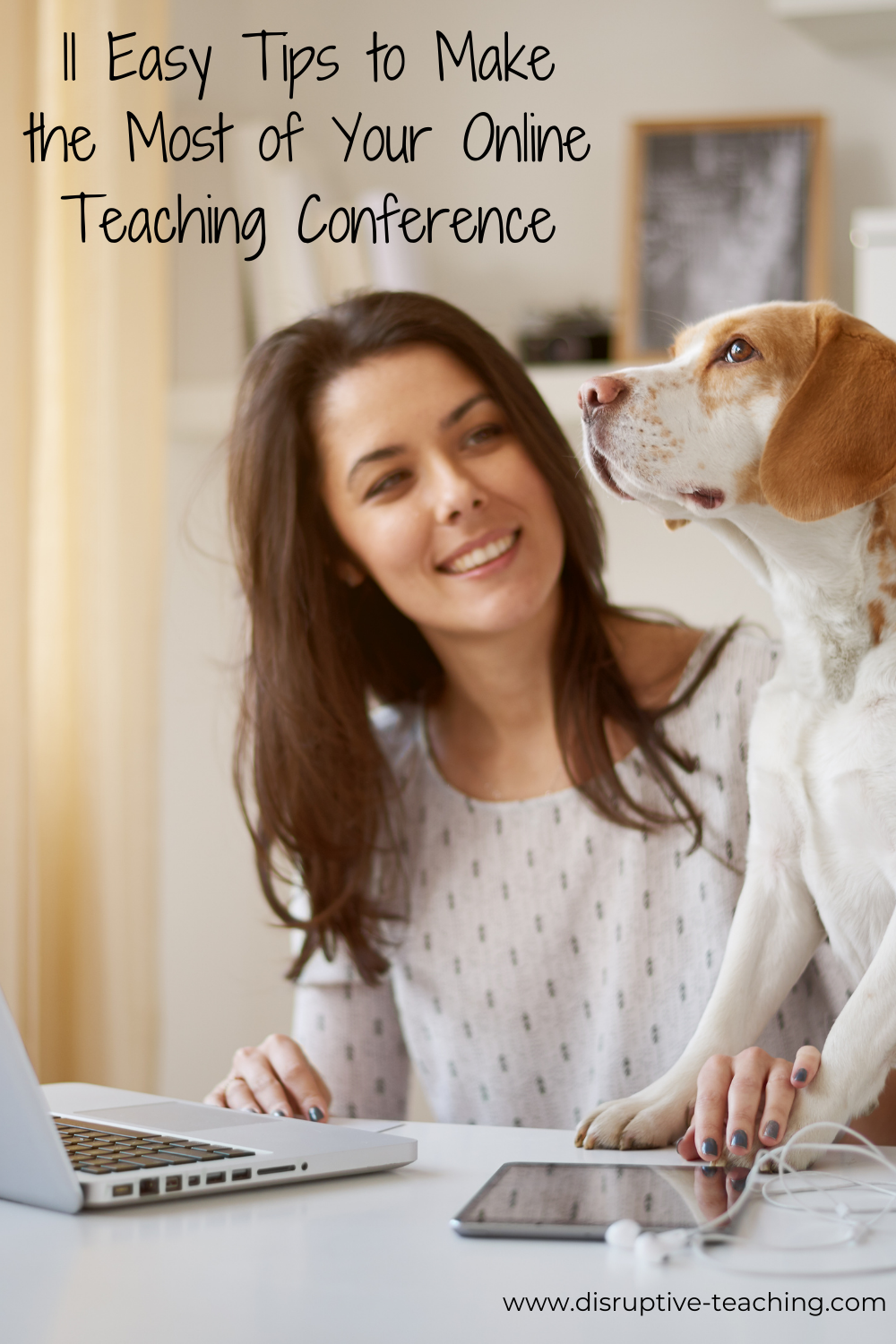Breaking the Rules- 3 Ways to Increase Student Agency
Inside: Three easy ways to adjust your classroom arrangement, student ownership, and routines to increase student engagement and agency.
“Don’t you need to get the class started?”
The question came from an administrator who was talking with me about something time-sensitive just outside of my classroom door as the bell rang.
I could see my class through the window in the door and knew I had a few moments before the students would need me.
“They are getting started. I have a few minutes.”
We quickly finished the conversation, and I was back in my classroom within a couple of minutes.
My students were moving around the room. A few were laughing, and, most importantly, everything was happening exactly as it was supposed to.
This wasn’t magic. And it is something that can happen in your class too!
Table of Contents:
What is Student Agency?
The definition of empowering is to give someone the authority or power to do something. In the example above, my students had been taught a routine and then were given the freedom to do it on their own.
Student agency goes one step further– it relates to students having an active role in their learning. It means students are focused on innovative ways of learning, and teachers are focused on student-centered teaching methods.
When students know what is expected of them, routines are solidly in place and practiced, and then given the power to do it on their own, you have an empowered classroom.
When students are comfortable in their classroom and have ownership of their space, they can begin the next step of having agency over the learning itself.
The Miracle of the Empowered Classroom
My students were not waiting for me to enter the room to “start class.” They were not waiting for directions or confused about what was happening.
Every day during this particular period, students knew to pick up a warm-up activity off the front table, take it to their seat to complete, then put it in the basket in the front. If they got stuck on a question, they simply circled it and turned it upside down on their desk, which let me know we needed to conference about it.
After the warm-up, each student knew what their next activity would be.
A few students wrote in their planners immediately.
Five students headed to the computers to log into an online learning program.
Two students began reading a book until I was ready to meet with them.
Quiet conversation and typical teenage chatter and giggling happened throughout, but at a level that was non-distracting to anyone else in the room until the warm-ups were complete.
By the time I was back in the room, most of the warm-ups were complete, and I could immediately head to the desks of students who had their warm-ups upside down so we could review the lesson.
In this scenario, no one was waiting for me to tell them what to do. My students had the agency to follow a routine, and I trusted them to do so.
Surprisingly, many of these students had been identified as students who struggled at school.
However, because they were empowered to do things independently and were not simply required to “follow directions,” they were actively engaged in the classroom.
The magic of an empowered classroom is that students aren’t simply “following the teacher’s directions” but instead have the agency to be active participants in the classroom environment.
Breaking the Rules
Ok, so maybe it technically isn’t rule-breaking, but changing the mentality that teachers tend to have.
Teachers must be “in control.”
Teachers must be “the boss.”
Teachers must never, ever let students have control, or students will take it all.
In the example above, the classroom was under control, but it didn’t look or feel like the standard “teacher in charge.”
The calm classroom resulted from consistent rules, expectations, and routines.
The students knew what they needed to do, and I trusted them.
How to Increase Student Agency?
So how do we go about empowering students in the classroom?
Classroom Arrangement
The classroom should be set up to be student-friendly:
Movement around the room is easy and direct
All materials are easily accessible
There are consistent locations for different tasks
For students to have agency in the classroom, the physical environment must make sense for students.
A student who has to ask for items they use throughout the class depends on the teacher. They are not able to move on with a task on their own.
If students need clarification about where they should be working when doing a group project, they will have to ask the teacher or their peers, which can cause disruption and delay the start of the assigned activities.
Things to Think of When Arranging an Empowered Classroom:
How/Where are students supposed to sit when working independently?
How/Where are students supposed to sit when working in a group?
What items will students need to use during your class, and do students have access to them?
Are there locations for specific activities such as sharpening a pencil, turning in papers, and getting a bathroom pass?
Student Agency and Ownership
Students will spend a significant amount of time in your classroom every day. Some students may spend as much or more time in your classroom as they do in their own bedrooms.
This means that for students to feel empowered in your classroom, the students have to feel like the space is theirs as well as the teacher's.
Empowering students to feel ownership of their classroom environment and agency over their learning helps students feel more comfortable and confident, and it helps them take responsibility for things like keeping the classroom clean.
Do you allow students to interact with the room?
An empowered classroom will enable students to engage with the class space. This means students may make decisions as a class to do things like open or close the blinds, work with the lights on or off, listen to music while working, etc.
Things to Think of When Considering Student Ownership in Your Classroom
What interactions am I comfortable with students having?
Are there areas that I need to be more comfortable with students accessing?
What limits are there on student movement of classroom objects (for example, tables and shelves cannot be moved)?
Can students help decorate the classroom?
Is there a system for making students aware of what they can and cannot do in the classroom?
Routine, Routine, Routine
One of the most significant parts of an empowered classroom is setting routines.
If students know what is expected, they can relax within the routine and be empowered to do what they are expected to do.
Most students thrive on being independent and trusted to do what they need to do within a set system.
If there are no routines, students always wait for you to be the leader and tell them what to do. To have agency as a student, they must know the expectations and have guidelines to stay within, so they can function without needing your constant direction.
Things to Think of When Considering Routines
Do you have routines for everyday things like handing in papers, sharpening pencils, using the restroom?
What routine could be taught for the start of your class so students can start the period feeling confident and empowered in your space?
What are the routines for making decisions in your classroom?
How do you break a routine when something changes? How can you cue students that the routine will be different
Are you looking for an easy way to remember these three tips?
Download the PDF: Quick Wins to Increase Student Agency
The magic of empowering students
in the classroom is genuinely less magic and more structure, routine, and trust. Once the structure and patterns are in place, the magic happens when you can spend more time engaging with your students and less time attempting to “control” your classroom.
















